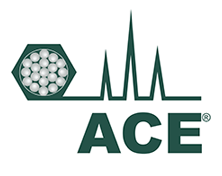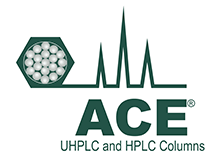PGg0PkFic3RyYWN0PC9oND4NCjxwPlRoZSBwb3RlbnRpYWwgdG8gaW5jcmVhc2UgY2hyb21hdG9n cmFwaGljIGVmZmljaWVuY3kgYW5kIHJlc29sdXRpb24gYWxvbmcgd2l0aCBzaWduaWZpY2FudCBz YXZpbmdzIGluIHNvbHZlbnQgY29zdCBhbmQgYW5hbHlzaXMgdGltZSBoYXZlIGRyaXZlbiB0aGUg dXB0YWtlIG9mIFVIUExDIHRvIG1hbnkgYXBwbGljYXRpb24gYXJlYXMuIFRoaXMgZGlzY3Vzc2lv biBvdXRsaW5lcyBob3cgaW5zdHJ1bWVudCBhbmQgY29sdW1uIHRlY2hub2xvZ2llcyBjb250aW51 YWxseSBldm9sdmUgdG8gbWVldCB0aGUgcmVxdWlyZW1lbnRzIG9mIFVIUExDLCBwcm92aWRpbmcg bmV3IG9wdGlvbnMgZm9yIGNocm9tYXRvZ3JhcGhlcnMuIEV4YW1wbGUgZGF0YSBhcmUgcHJvdmlk ZWQgdG8gc2hvdyB0aGUgaGlnaCBzcGVlZCBhbmQgaGlnaCByZXNvbHV0aW9uIG9wdGlvbnMgb2Yg VUhQTEMuIEFkdmFuY2VkIHRvcGljcyBzdWNoIGFzIEhQTEMB4oaSSFBMQyB0cmFuc2xhdGlvbnMg dXNpbmcgZnJlZSBkb3dubG9hZGFibGUgdG9vbHMgYXJlIGFsc28gY292ZXJlZC48L3A+


Instrument and Column Technology
The drive for increased chromatographic performance has led column manufacturers to continuously develop smaller and smaller particle sizes for liquid chromatography. Column efficiency is inversely proportional to the particle size, hence reducing the particle size increases the number of theoretical plates. Although smaller particles provide higher efficiencies, the trade-off is an increase in the operational back pressure. The introduction of commercially available high pressure capable instrumentation paved the way for the routine use of sub-2 micron particles. These small particles were shown to provide exceptional performance, particularly at flow rates higher than typically used with larger particle sizes, as demonstrated by their respective van Deemter plots (Figure 1, also see AKN0010: Band broadening and the van Deemter Equation). As shown, the optimum flow rate for 1.7 μm particles is greater than that of 3 and 5 μm particles. Additionally, 1.7 μm particles exhibit a flatter curve, meaning that a Figure 1: Van Deemter plots for various particle sizes. The minimum of each curve represents the optimal flow rate (i.e. highest efficiency) for that particle size. they can still deliver high performance at higher flow rates. In contrast, larger particles show a sharper drop-off in performance when the flow rate is elevated beyond the optimum value.
VGhlIGNvbWJpbmF0aW9uIG9mIHRoZSBoaWdoZXIgYmFjayBwcmVzc3VyZSBnZW5lcmF0ZWQgYnkg c21hbGxlciBwYXJ0aWNsZXMgYW5kIHRoZSB1c2Ugb2YgZWxldmF0ZWQgZmxvdyByYXRlcyBuZWNl c3NpdGF0ZWQgdGhlIGRldmVsb3BtZW50IG9mIExDIGluc3RydW1lbnRhdGlvbiBjYXBhYmxlIG9m IG9wZXJhdGluZyBhdCABMSwwMDAgYmFyICh+MTUsMDAwIHBzaSk7IGEgc2lnbmlmaWNhbnQgaW5j cmVhc2Ugb3ZlciB0aGUgY29tbW9ucGxhY2UgfjQwMCBiYXIgcHJlc3N1cmUgbGltaXQgb2ZmZXJl ZCBieSBtYW55IEhQTEMgaW5zdHJ1bWVudHMuIFRoZSBoaWdoZXIgcHJlc3N1cmUgcmVxdWlyZW1l bnRzIGRyb3ZlIGFuIGV4dGVuc2l2ZSByZS1kZXNpZ24gb2YgdGhlIHB1bXAgYW5kIG90aGVyIHN5 c3RlbSBjb21wb25lbnRzIHRvIGRlbGl2ZXIgc3RhYmxlIGxpcXVpZCBmbG93IHVuZGVyIHN1Y2gg Y29uZGl0aW9ucy4gVGhlIGVudGlyZSBmbG93IHBhdGggb2YgVUhQTEMgaW5zdHJ1bWVudHMgaGFz IGJlZW4gcmUtZW5naW5lZXJlZCB0byBlbnN1cmUgcmVsaWFibGUgb3BlcmF0aW9uIGF0IGhpZ2hl ciBwcmVzc3VyZXMuIEluIGFkZGl0aW9uLCBzbWFsbGVyIGZvcm1hdCBjb2x1bW5zIChlLmcuIDMu MCBhbmQgMi4xIG1tIElEKSBhcmUgdHlwaWNhbGx5IHV0aWxpc2VkIHRvIGZpcnN0bHksIGluY3Jl YXNlIHRoZSBkaXNzaXBhdGlvbiBvZiBmcmljdGlvbmFsIGhlYXQgcmVzdWx0aW5nIGZyb20gdGhl IHVzZSBvZiBoaWdoIGZsb3cgcmF0ZXMgd2l0aCBzbWFsbCBwYXJ0aWNsZSBzaXplcywgYW5kIHNl Y29uZGx5LCB0byBoZWxwIGFjaGlldmUgYSByZWR1Y3Rpb24gaW4gc29sdmVudCBjb25zdW1wdGlv bi4=





